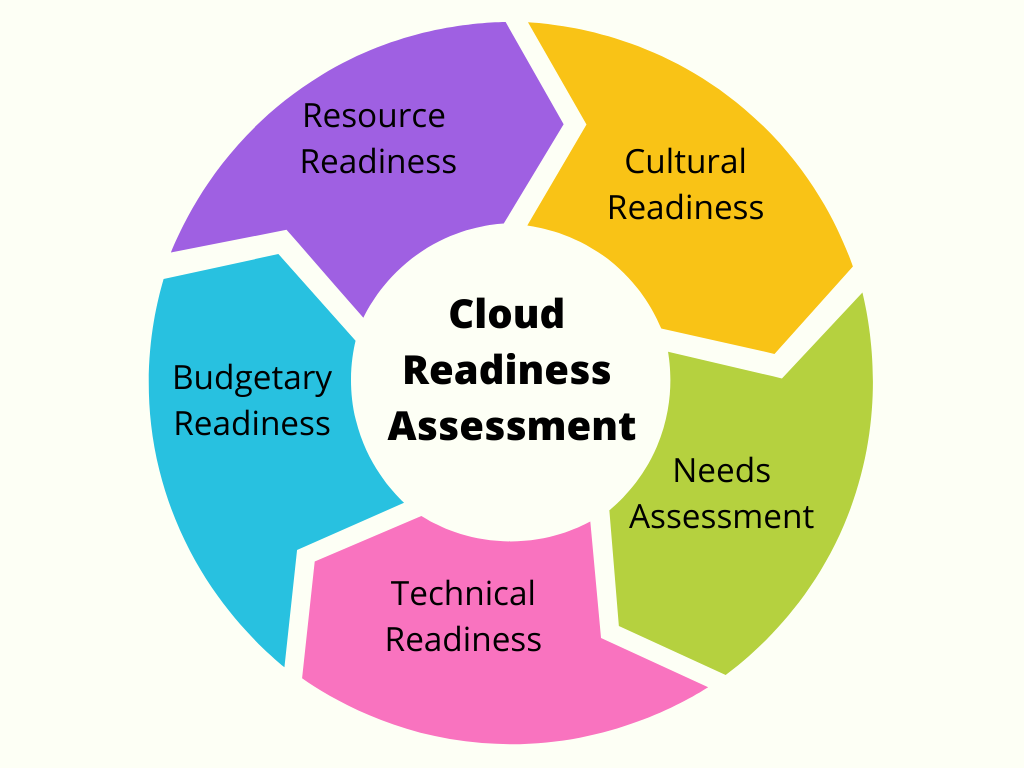-2.jpg?width=700&name=blog%20banner%202%20(1)-2.jpg)
For technology organizations, cloud adoption is a go-to strategy for cost reduction, risk mitigation, and a more increased scope of scalability. Enterprise-ready cloud infrastructure highlights the maturity of a company's depth of technological prowess. Therefore, it is important to conduct periodic cloud readiness assessments.
Organizations adopting cloud migration must identify potential security threats beforehand to keep the data and applications in the cloud secure. Bridging the gap between the security requirements of the organization and the security policies of the cloud service provider is paramount to facilitating this. The cloud-migrating company must have a clear understanding of the technical nuances of the cloud infrastructure they are dealing with and potential traffic-based challenges.
In this article, we will dive deep into the need for cloud readiness assessment and the various ways this is being carried out by cloud-based enterprises.
Why Assess Readiness Of Cloud Infrastructure?
The primary motivations behind moving workloads to the cloud are greater productivity, collaboration, and of course better savings and return on investment. So planning the migration of the enterprise onto the cloud is as important as the actual migration to the cloud itself.
There are a bunch of certifications, policies, and compliances of the cloud service provider that every enterprise must prepare for.

Organizations tend to avail of a readiness assessment from a third-party provider of such services. The primary line of business applications is examined by the third-party provider to finally establish holistic cloud infrastructure readiness in the form of valid and recognized certifications.
If a cloud readiness assessment is poorly managed, your company runs the risk of a misalignment of your original plans with your business outcomes. This translates to higher cloud consumption costs, and applications getting riddled with runtime errors. In the long run, your whole enterprise cloud infrastructure could become an underperforming ecosystem.
ALSO READ: A CTO's Guide to DevOps and its Services
How To Implement Cloud Readiness Assessment?
An organization shifting its workflows to the cloud for the first time may have a rough idea of what needs to be done. A cloud readiness assessment checklist converts this vague idea into an actionable detailed plan. The following are some of the ways in which this assessment can be carried out effectively:
1)Categorize Workloads
You should begin by holistically gauging the capabilities of your preferred cloud service provider and mapping your requirements according to these capabilities. Based on how both of these aspects align, you can go on to categorize your workloads clearly and map the desired outcomes.
Before even choosing a provider, you should check that they have the necessary breadth of cloud infrastructure and services that you need. The security, disaster recovery, and business continuity capabilities or SLAs must also be in place. A professional services team to support you throughout the migration would also help.
2)Assess Team Potential
Your in-house team is responsible for the continued success of the cloud migration procedure. So it is important to assess their capabilities beforehand. They should possess the necessary prowess to ensure a smooth transition of the cloud infrastructure. If they have prior experience in cloud migration that is an added bonus.
Another thing to take care of is that they have the necessary expertise in handling the software tools for migration. Their efforts must be focused on the cloud migration process and priorities should not be given to other tasks while the enterprise architecture and workload are being shifted to the cloud. This will ensure that errors are minimized during this transition.
ALSO READ: On-Premise to AWS Migration: Know Why and How to do it?
3)Guage Existing Infrastructure Capabilities
Assessing the capabilities of your existing infrastructure is essential to determine whether a cloud migration initiative would be ultimately feasible. You need to fully assess the applications that you want to move to the cloud infrastructure and whether the on-premises hardware and operating environment are ready to handle it in case the cloud migration attempt is a failure.
Additional aspects of your on-prem architecture should be gauged such as network, data collection, and storage capabilities. The on-prem infrastructure must be prepared to support your applications in case of a contingency. The consumption level of resources, associated costs, technologies needed, possible integrations, and limitations must be accounted for.
4)Set Order Of Migration
You can opt for professional services of cloud service providers to establish timelines of cloud migration and associated budget requirements. An accurate timeline and budget determination give you a clear idea so as to prioritize your applications' migration. Not everything needs to be moved to the cloud infrastructure at once, some of these can be supported by an on-prem infrastructure for the time being.
A strategic portfolio analysis of the cloud service provider will give you a better understanding that will enable you to determine what applications or workloads to move to the cloud-first. Meanwhile, the design and testing of the applications must also be paid close attention to. A disaster recovery plan must also be in place in case of unforeseen mishaps that can lead to system downtime.
5)Security Requirements
Migration to the cloud brings with it a slew of indeterminable security scares that can all but destabilize your enterprise workload migration plans. Identity and access management procedures must be detailed and systematic to avoid any unwanted breaches into the mainframe or other such cyber-attacks using brute force algorithms.
The cloud service provider can supply you with all the necessary disaster recovery mechanisms, firewalls, endpoint security, and compliance norms. You can compare the security features of the potential cloud service providers and determine which one to go with at the end of the day.
Readiness assessment requires a robust set of monitoring tools and container-focused configurations for the underlying operating system. Implementation approach that takes into account customer data, host health, application health, as well as access control. You can find is a quick guide to making the most out of cloud services.



